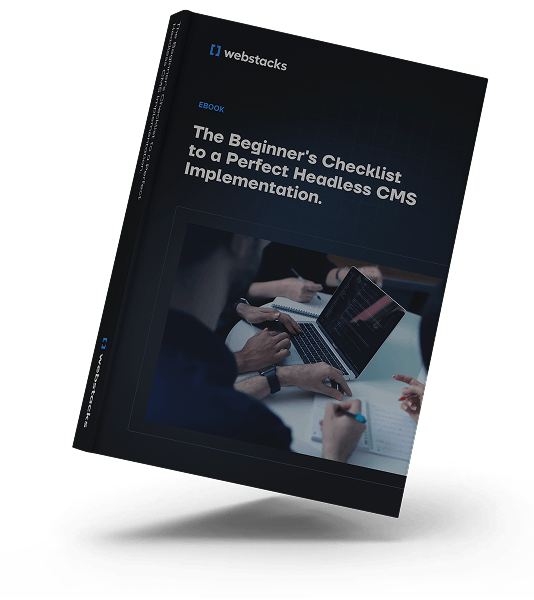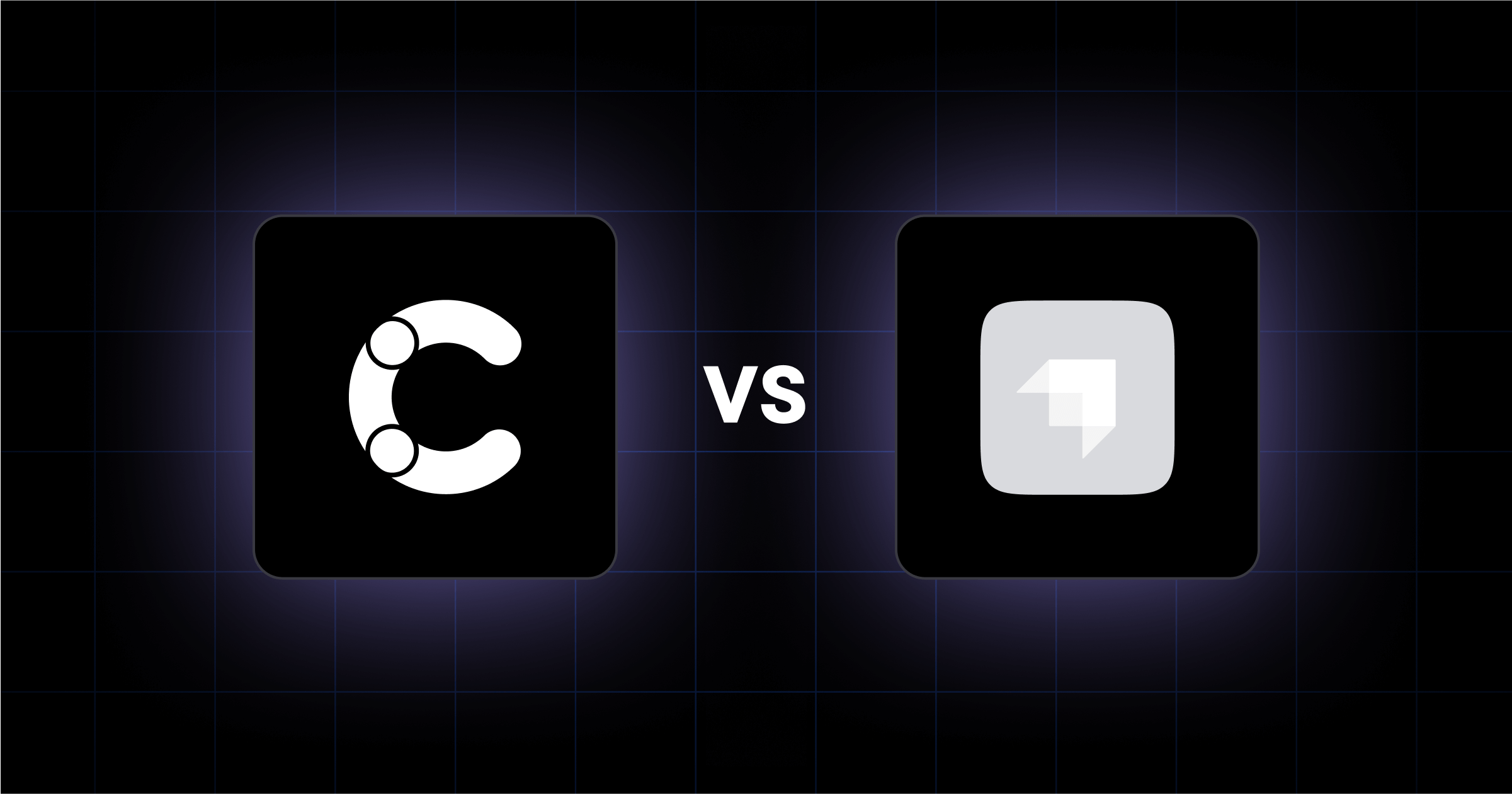Headless CMS platforms such as Strapi and Contentful are great options for improving site performance, launching content faster, and reducing bottlenecks between marketing and development.
Webstacks is a web development agency that favors headless platforms. Through our projects, we’ve seen firsthand how these platforms give B2B teams the flexibility to build websites that are modern and scalable.
As the demand for composable websites grows, platforms like Contentful and Strapi offer two very different, but still powerful paths forward.
This guide will help you choose the right CMS based on your org structure, growth stage, and long-term goals.
When to Use Strapi and When to Go For Contentful
Here’s a quick breakdown if you’re short on time:
Use Strapi if:
- You want to self-host your CMS for full backend control.
- Your developer team owns the website and prefers open-source flexibility.
- You need a fast, customizable content API and are okay managing infrastructure.
Use Contentful if:
- Your marketing team needs publishing autonomy with structured workflows.
- You’re building a multi-language, multi-site architecture at scale.
- You want an enterprise-grade CMS with robust governance tools.
What Sets These Platforms Apart
At first glance, both Strapi and Contentful might appear similar. Here’s how they differ:
Strapi is Open-Source and Developer-Led
Strapi is an open-source CMS that gives development teams full control over the backend. You host it yourself, customize it as needed, and can tailor every part of the content structure and API to your tech stack.
This is ideal for companies with in-house development resources who want to:
- Avoid SaaS subscription costs
- Customize authentication, integrations, and roles
- Keep full control over hosting and data
However, the trade-off is increased complexity. You’re responsible for security patches, infrastructure management, and DevOps, which is something many B2B teams prefer to avoid as they scale.
Contentful Supports Complex Teams and Global Workflows
Contentful is built for scale. It offers structured content modeling, localization tools, and role-based governance out of the box. This makes it a great fit for:
- Cross-functional teams (marketing, design, development)
- Distributed content operations
- Enterprise content governance and security needs
You won’t need to manage infrastructure or worry about uptime. But Contentful does come at a higher cost and takes time to learn.
Discover how Calendly implemented Contentful with the help of Webstacks and improved their site performance.

Which CMS Fits Your Growth Goals?
Let’s shift real-world B2B scenarios. Here's how Strapi and Contentful perform in different team environments and business contexts.
Use Strapi If...
1. You’re an early-stage SaaS building fast with limited budgets
Strapi is free and open-source, which makes it an ideal headless CMS for startups. You can build it locally, deploy it on your own server, and get a fully functional content API.
2. Your dev team wants to own the CMS stack
Strapi lets developers customize everything, from APIs and data structures to role permissions and endpoints. If your tech team values control and is used to working with Node.js and MongoDB or Postgres, Strapi fits naturally.
It’s ideal for technical founders, dev-first teams, and custom app integrations.
3. You need deep integration with custom business logic
Some B2B products require advanced authentication flows, complex API orchestration, or unique admin permissions. Strapi’s flexibility means you can tailor the backend to fit any business logic.
For example, a developer team at a FinTech startup can use Strapi to power a gated content hub with secure authentication tied to their product’s backend.
Use Contentful If...
1. Your marketing team needs to move fast
Contentful separates content from code, which means marketers can create, update, and publish without developer intervention. The UI is clean and designed for non-technical users.
Marketers can launch landing pages or swap hero images in minutes, without creating tickets or Slack threads.
2. You’re scaling to multiple regions or product lines
Localization is one of Contentful’s standout strengths. You can manage multiple locales and link content variations while keeping global consistency.
It’s perfect for SaaS companies expanding internationally or managing content across multiple verticals.
3. You need structured governance and workflows
With features like role-based access, Contentful makes it easy to introduce guardrails. This is essential for B2B orgs with multiple stakeholders interacting with the CMS.
4. You’re building a composable architecture
Contentful works well with frontend frameworks like Next.js, personalization tools like Uniform, and CDPs like Segment. It’s a core building block of many composable tech stacks.
You can scale and evolve your site over time without ripping out the whole backend.
What Does Implementation and Maintenance Look Like?
Your decision should also factor in the implementation process, as well as CMS maintenance. Both Strapi and Contentful require thoughtful implementation. But the time, tooling, and team involvement look very different.
Strapi gives your dev team complete freedom to architect the system.
That’s powerful, but it means you’ll be responsible for creating the environment and maintaining infrastructure. Not to mention the handling of updates, security patches, and uptime.
If your team enjoys building from the ground up and has strong backend expertise, this won’t be a blocker. But it does require an ongoing investment in DevOps and developer time.
Contentful setup is faster, hosting is handled for you, and updates are rolled out automatically. This makes it easier to onboard content teams quickly and scale without thinking about infrastructure. However, implementation still requires frontend development to integrate Contentful into your tech stack.

Security, Compliance, and Data Privacy
B2B teams (especially in industries like fintech or healthcare) often need to meet specific security and compliance standards.
Strapi, being self-hosted, gives you full control over your environment, which can be an advantage for teams managing sensitive data.
However, it also means you’re responsible for securing your infrastructure.
Contentful, as a SaaS platform, offers enterprise-grade security out of the box, including SOC 2 compliance, GDPR alignment, and SLAs.
It’s a safer bet for teams that want fewer operational responsibilities and need to check compliance boxes without building from scratch.
Still Considering Your Options?
Strapi and Contentful offer two different approaches to headless content management: one open-source and fully customizable, the other hosted and enterprise-ready. But if neither feels like the right fit for your team, there are other platforms for you to check out.
Here are a few additional CMS options:
- Sanity: Great for teams that want full schema control, custom workflows, and a highly flexible content studio
- Builder.io: Ideal for teams that want visual editing on top of a frontend framework like React or Next.js
- Storyblok: Combines structured content with a visual editor and multilingual support, making it a good fit for global teams
- Prismic: Simple to set up, visually intuitive, and suited for small marketing teams that want to launch fast
If you’re transitioning from a traditional CMS, make sure to download our headless CMS implementation checklist to get a good idea of what to expect and avoid mistakes:

These side-by-side CMS comparisons can also help you clarify what your team needs next:
- Contentful vs Sanity
- Strapi vs Sanity
- Contentstack vs Contentful
- Builder.io vs WordPress
- Contentful vs Drupal
Choose Based on Fit, Not Just Features
There’s no one-size-fits-all answer in the Strapi vs Contentful debate.
Both are powerful and headless. But each is best suited to different types of teams and growth goals:
- Choose Strapi if you want flexibility, dev ownership, and open-source freedom.
- Choose Contentful if you want scalability, structure, and marketing independence.
Still unsure? Let’s talk.
At Webstacks, we specialize in helping B2B companies evaluate and implement modern CMS platforms. Whether you’re building your first composable stack or migrating from a legacy system, we’re here to guide the way.





